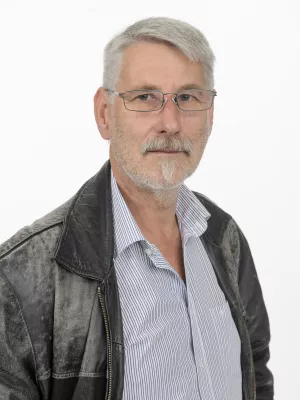
Anders Lindahl
Professor emeritus

Making in turbulent times:new insights into late 18th-and early 19th-century ceramic crafts and connectivity in the Magaliesberg region
Författare
Summary, in English
Among Simon Hall's influential contributions to historical archaeology are two research agendas: The need to focus attention on lower scalar levels of analysis, and broadening the concept of ceramic style to include less visible technological qualities. The latter is of particular importance to the stylistically bland and less decorated assemblages from the 18th and 19th centuries. Combining and developing the two agendas further, this article presents a new set of analyses of ceramic material from the stonewalled sites Marothodi and Lebenya in the Magaliesberg region, dating to the decades leading up to the difaqane in the 1820s. We explore households as flexible spaces for making, creativity and memory-work in turbulent times. The late 18th and early 19th centuries saw an accelerated development of pyrotechnologies such as metalworking and ceramics. This happened in tandem with significant changes to the built environment and spatial organisation of the household, which was the primary arena for craft learning. Frequent relocation and alteration of learning spaces put transmission and teacher apprentice ties under serious strain. Seeking to trace connections across a complex and layered political landscape, we tentatively hypothesise that ceramic craftspeople became relatively less reliant on locally anchored insights and placed more emphasis on sharing knowledge and materials within extended craft-learning networks. The study includes a comparison of the results of petrographic and geochemical laboratory analyses with those from a handheld XRF device. Offering instant feedback while still in the field, such mobile tools can help in developing sampling strategies that also include a higher percentage of undecorated ceramic material.
Avdelning/ar
- Kvartärgeologi
Publiceringsår
2023
Språk
Engelska
Sidor
89-124
Publikation/Tidskrift/Serie
Southern African Humanities
Volym
36
Dokumenttyp
Artikel i tidskrift
Förlag
KwaZulu-Natal Museum
Ämne
- History and Archaeology
Nyckelord
- Ceramics
- Cha ne opératoire
- Craft mobility
- Cross-craft
- h-XRF.
- Late farming communities
- Learning networks
- Petrography
- SEM
- Technological style
- Townscapes
Status
Published
ISBN/ISSN/Övrigt
- ISSN: 1681-5564

